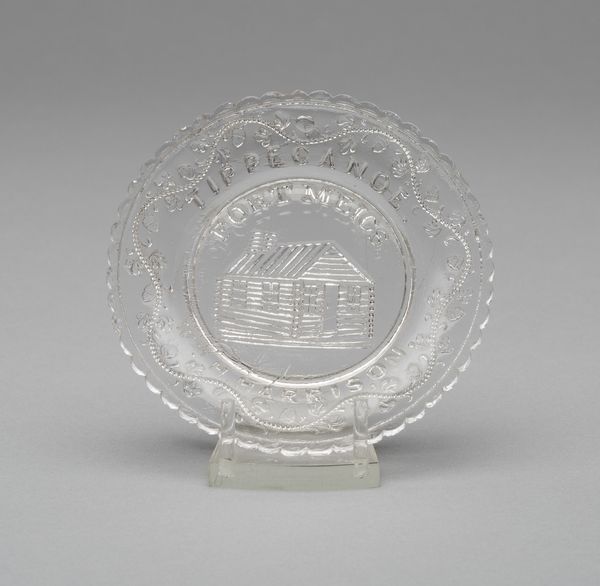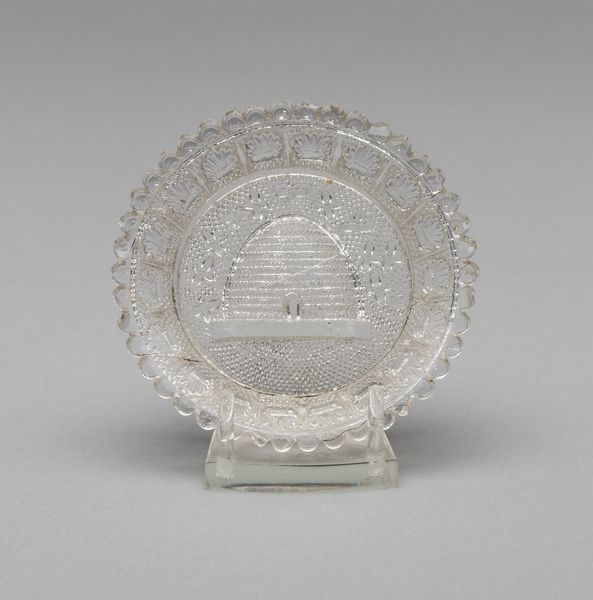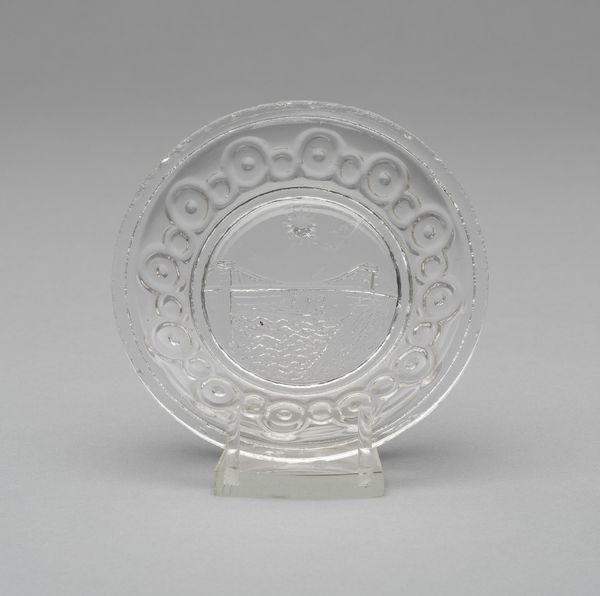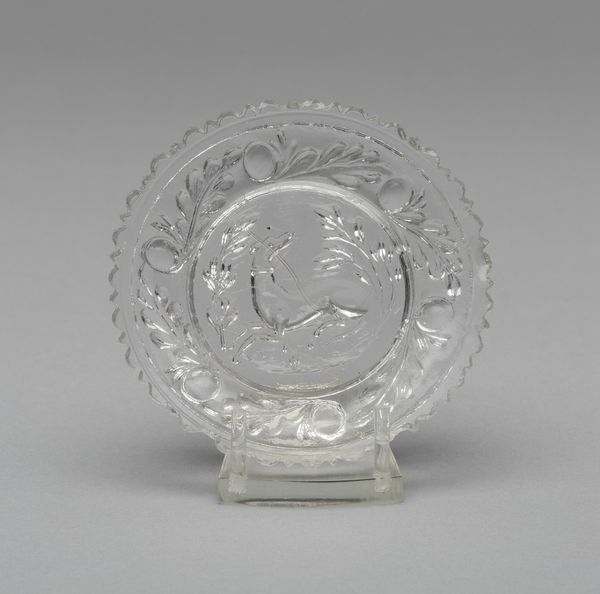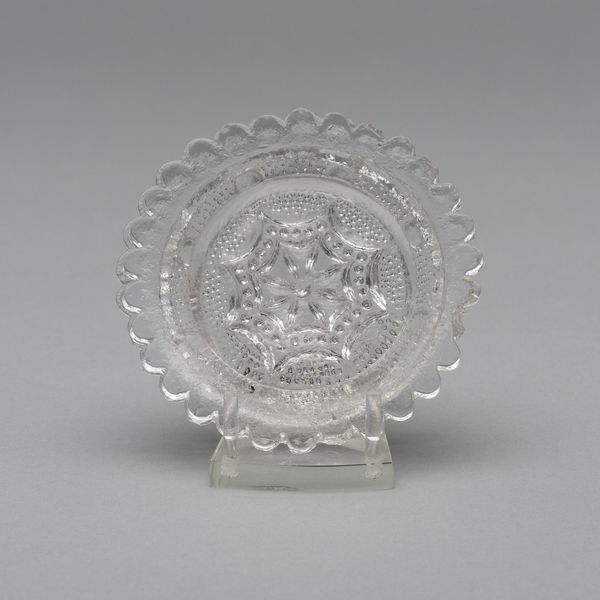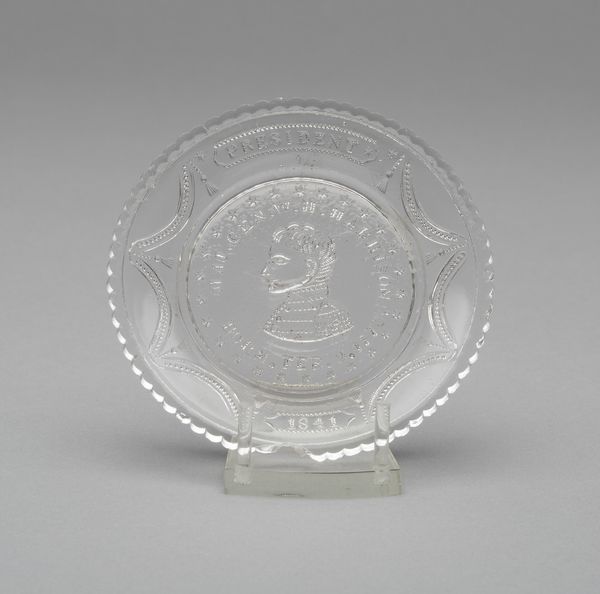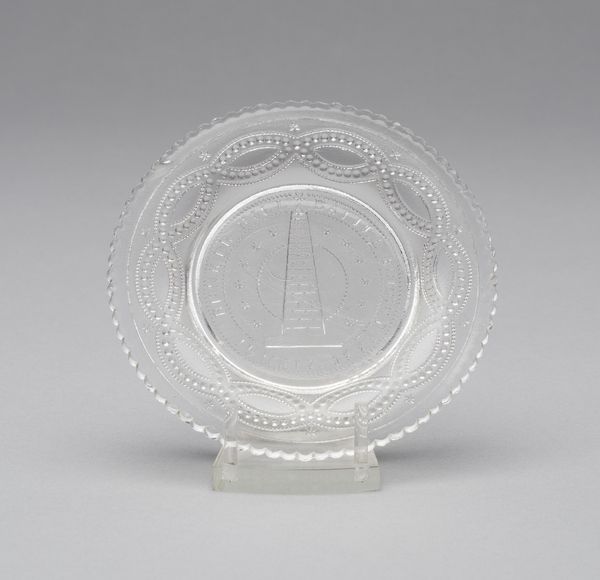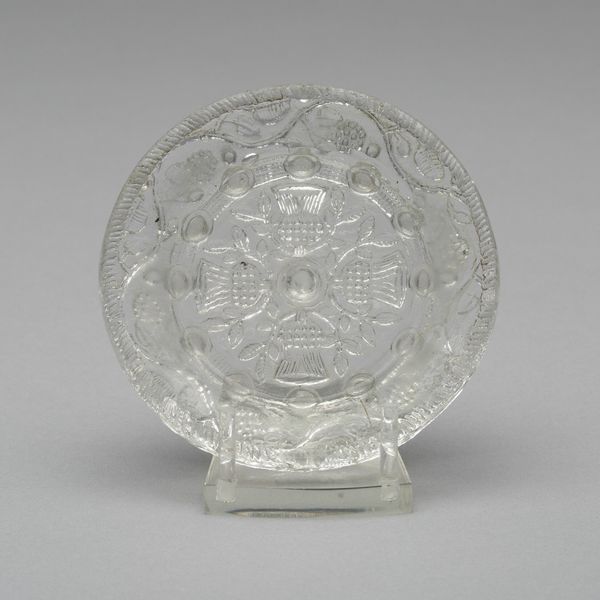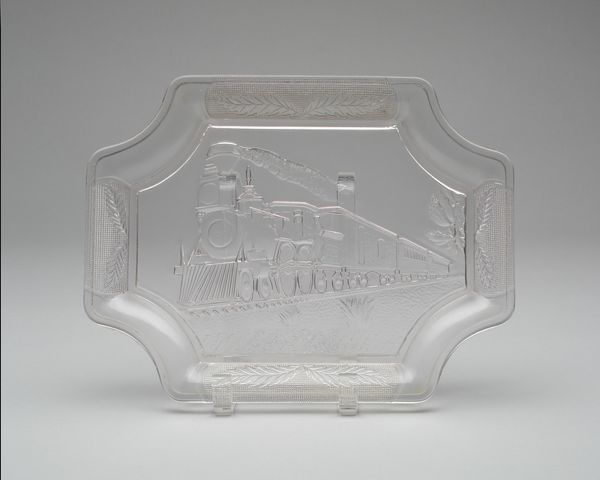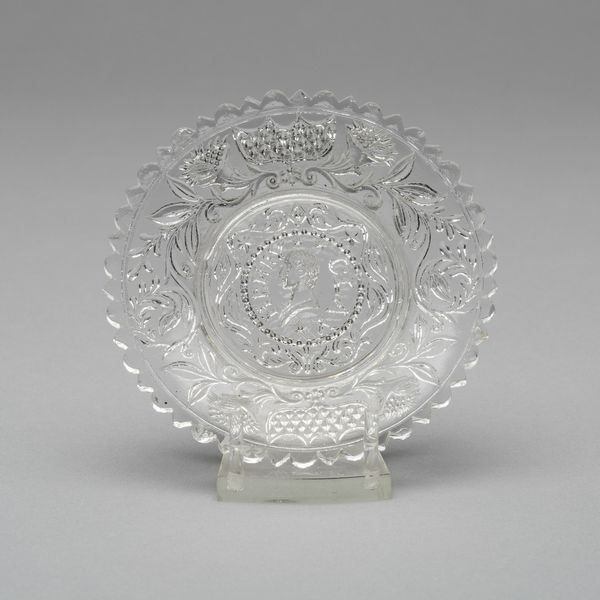
glass
#
glass
#
decorative-art
Dimensions: diam. 8.9 cm (3 1/2 in.)
Copyright: Public Domain
Curator: This exquisitely detailed object is a cup plate, made of glass, dating back to around 1835-1838. The piece, currently residing here at The Art Institute of Chicago, is by an anonymous maker. Editor: It's so delicate. I am immediately struck by the level of craft. Clear glass transformed with such intricate designs—it's amazing. How did they achieve that precision in a mass-produced object? Curator: That’s an astute observation! The technique likely involved pressing molten glass into molds. And I’m also captivated by the symbols it contains—stars, hearts, and that sailing ship at its center. It speaks to a romantic vision of exploration and perhaps national pride of the time. Editor: Ah, the molds—that explains the potential for replication, but doesn't diminish the skill in designing and producing the molds themselves! The sailing ship is very prominent; I’m curious, does it reference a specific vessel, or is it more allegorical? The stars and hearts, while aesthetically pleasing, seem a tad…conventional. Curator: I suspect it is an allegory. Sailing ships in general signified travel and new beginnings to the nineteenth-century imagination. The stars could tie into navigation—a guiding light, if you will, for life's journey, as they do recall traditional sailor tattoos, for example, which speak of identity and cultural memory, whereas hearts may simply represent hope and sentiment. But consider the plate's purpose too – designed to catch drips from a tea cup while people socialized. Perhaps the makers sought to introduce subtle emotional comfort, a charm almost, to domestic life through these well known forms. Editor: Very intriguing, the placement of symbolism in such a utilitarian item and social setting. Thinking about it further, such designs become accessible and relatable and more universal if somewhat conventional. And the act of pressing the molten glass also brings in discussions around labor and industrialization – How did these technologies reshape both craft and culture? And for what kind of consumer was this cup plate actually made? Curator: Precisely. It invites questions about how symbols enter and shape our daily lives. The convergence of functionality, mass production, and imagery creates a complex narrative. It’s lovely when an object so seemingly simple can lead us down such interesting pathways. Editor: I agree! I hadn't considered it initially, but the glass plate’s clear and distinct symbolism opens doors to explore the industry of its production, consumer appeal, and cultural trends woven in its materiality and decoration.
Comments
No comments
Be the first to comment and join the conversation on the ultimate creative platform.
